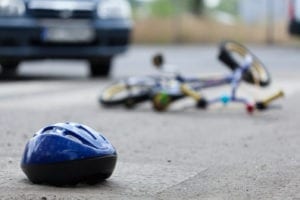Law enforcement and private investigators may want to see any accessible video evidence as part of their investigation into an accident. Typically, an auto accident attorney will also look for surveillance footage that […]
Children are far more likely to make mistakes in judgment than adults are, and it is for this reason that the responsibility falls upon adult drivers to exercise particular care in school zones.
Unfortunately, nearly 500 children are injured in car accidents every single day. More children are hit by cars near schools than in any other location – not necessarily due to the frequency of cars in these areas, but due to the number of children present. As drivers, it is our responsibility to watch out for children.

As parents, we must teach children about safely traveling to and from school. The personal injury lawyers at Rasansky Law Firm encourage you to discuss school safety with your child before they head to school on their own.
As drivers, we need to be responsible and on the lookout for children sharing the streets. Mornings and afternoons are busy times for children going to and from school. Take extra caution during these times of day during the school year.
Distracted driving is a particular risk factor for accidents involving children in school zones. There is a reason using your cell phone in school zones is illegal. All it takes is a short lapse in attention to cause a serious injury or even a fatality to a child. Never text or talk on the phone while driving in school zones.
Picking up and dropping off students to and from school is a particular danger for parents, children, and third-party motorists. Here are some ways to reduce that risk:
Children often ride bicycles, both inside and outside of school zones. Train yourself to watch for them and learn exactly where your blind spot is as a motorist. Take particular care when turning left making sure that a bicyclist is not attempting to pass you as you slow down for the turn. Some other safety tips include:
Contact a Dallas Child Injury Lawyer Today
If your child has been injured in an accident, contact our personal injury lawyers experienced with injuries involving children. Call 214-651-6100 to schedule a free initial consultation with us, and remember that we work on a contingency fee basis. Our fee is zero unless you win.
Note: The information that was utilized in this post was gathered from the use of secondary sources. This information used has not been confirmed or independently verified. If you locate any information that is not correct, please contact our firm as soon as possible so that we can make the appropriate corrections. If you find any information that is false, we will remove or correct the post immediately after it is brought to our attention.
Disclaimer: As a valued member of the Dallas community, Rasansky Law Firm’s goal is to improve the safety of all residents in the great state of Texas. These posts should not be viewed as a solicitation for business and the information included herein should not be taken as medical or legal advice. The photos used in this post are not representative of the actual crash scene.
Over 30+ Years Of Personal Injury Experience
Top-Rated and Award-Winning Personal Injury Lawyers
Attorneys Available to Discuss Your Case Now
No Fee Unless You Win
Free Confidential Consultation.
Fill out the form below to receive a free and confidential initial consultation with an experienced personal injury lawyer.